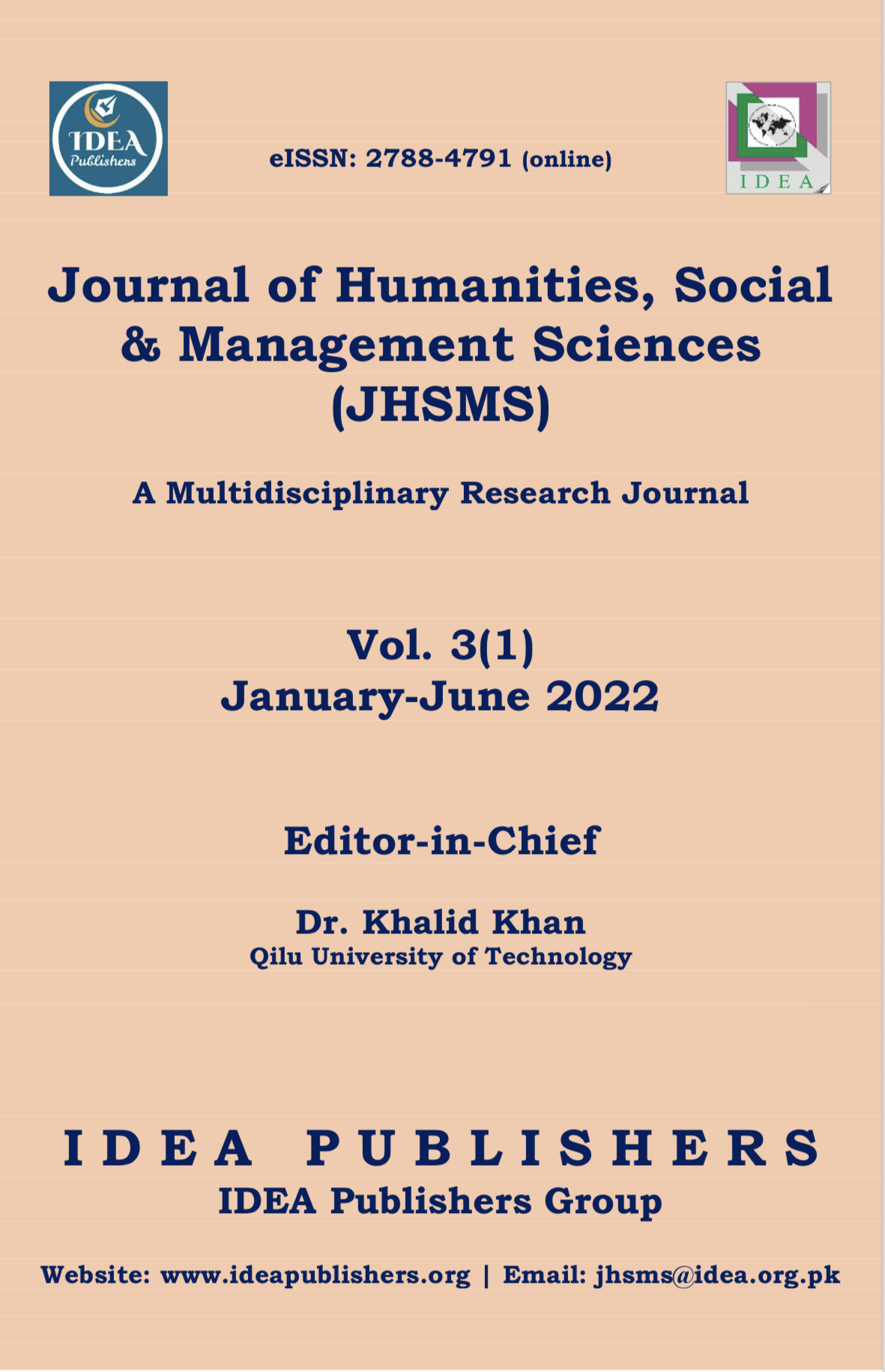Sexual harassment on public transport: a survey study of Rawalpindi, Pakistan
DOI:
https://doi.org/10.47264/idea.jhsms/3.1.18Keywords:
women passengers, sexual harassment, harassment in transport, victimization of women, harassment offenders, urban passengersAbstract
The study was conducted to examine prevalence of sexual harassment, its nature, and its consequences on women during traveling on public transport. A survey research method was used to collect the information. A sample of 105 women using the purposive sampling technique was selected from three different bus stops in Rawalpindi city of Pakistan. Routine Activity Theory of Cohen and Felson (1979) was applied to analyse data about the victimization of women passengers. The findings revealed that women participated in the study, 41% were students, 34% were working women and 25% were housewives. 75% of women travelled on a daily basis while the rest once a week or occasionally. The women faced different forms of harassment and 46% of them faced it sometimes while 36% faced it most of the time during traveling. The findings revealed types of offenders and among them, 64% were passengers, 24% were bus helpers and 12% were drivers. 89% participants considered it a serious matter and 52% of women took action in some way from verbal retaliation, informing the family members, to physical retaliation. It is recommended to develop a mechanism to implement the existing laws to make travelling safe for women.
References
Action-aid. (2019). Freedom to move women’s experience of urban public transport in Bangladesh, Brazil and Nigeria, and how lost tax revenues can pay to improve it. ActionAid, South Africa. http://www.actionaid.org/sites/files/actionaid/178619_2785.pdf
Apaak, D., & Sarpong, E. (2015). Knowledge level and incidence of sexual harassment in sports: Views of Ghanaian Female University Athletes. Journal of Educational and Social Research, 5(3), 121. https://www.mcser.org/journal/index.php/jesr/article/view/7706/7387 DOI: https://doi.org/10.5901/jesr.2015.v5n3p121
Asian Development Bank Pakistan. (2014). Rapid assessment of sexual harassment in public transport and connected spaces in Karachi. 1–46. https://www.adb.org/sites/default/files/project-document/152881/44067-012-tacr-19.pdf
Ceccato, V. (2017). Women’s victimisation and safety in transit environments. Crime Prevention Community Safety, 19, 163–167. https://doi.org/10.1057/s41300-017-0024-5 DOI: https://doi.org/10.1057/s41300-017-0024-5
Cohen, L. E., & Felson, M. (1979). Social change and crime rate trends: A routine activity approach. American Sociological Review, 44(4), 588–608. https://doi.org/10.2307/2094589 DOI: https://doi.org/10.2307/2094589
Fattah, E. A. (1991). Understanding criminal victimization: An introduction to theoretical victimology. Prentice-Hall.
Gautam, N., Sapakota,N., Shreshtha, S., & Regmi, D. (2019). Sexual harassment in public transportation among female student in Kathmandu Valley. Risk Management and Healthcare Policy, 12, 105–113. https://doi.org/10.2147/RMHP.S196230 DOI: https://doi.org/10.2147/RMHP.S196230
Goodyear, S. (2015). More women ride mass transit than men. Shouldn’t transit agencies be catering to them? Bloomberg.com. https://www.bloomberg.com/news/articles/2015-01-30/more-women-ride-mass-transit-than-men-shouldn-t-transit-agencies-be-catering-to-them
Jagori & UN Women (2011). Safe cities free of violence against women and girls initiative. Report of the Baseline Survey Delhi 2010. http://www.jagori.org/wp-content/uploads/2011/03/Baseline-Survey_layout_for-Print_12_03_2011.pdf
Korn, J. (2018). Riding scared: Sexual violence and women’s mobility on public transportation in Santiago, Chile. University of Pennsylvania. https://repository.upenn.edu/senior_ seminar/24
Kunieda, M., & Gauthier, A., (2007). Gender and urban transport: Fashionable and affordable. Sustainable transport: A sourcebook for policy makers in developing cities. Eschborn: Technische Zusammenarbeit.
Loukaitou-Sideris, A. (2016). A gendered view of mobility and transport: Next steps and future directions. Town Planning Review, 87(5), 547–565. DOI: https://doi.org/10.3828/tpr.2016.38
Lundkvist, H. (1998). Oja¨msta¨lldhetens Miljo¨er. Stockholm: Svenska kommunfo¨rbundet och Kommentus fo¨rlag.
Mazumber, H. & Pokharel, B. (2019). Sexual violence on public transportation: A threat to women’s mobility in Bangladesh. Journal of Aggression, Maltreatment & Trauma, 28(8), 1017-1019. https://doi.org/10.1080/10926771.2018.1491487 DOI: https://doi.org/10.1080/10926771.2018.1491487
Morgan, R., & Smith. M. J. (2006). Crimes against passengers: Theft, robbery, assault and indecent assault. In M. J. Smith, & D. B. Cornish (Eds.), Secure and tranquil travel: Preventing crime and disorder on public transport (pp 77-102). Routledge.
Pakistan Panel Code. (1860). Criminal Law (Amendment) Act 2009 Section 509. Government of Pakistan. Act XLV of 1860
Plan International. (2020). How are children affected by coronavirus? https://plan-international.org/emergencies/covid-19-faqs-girls-women
Smith, M.J. (2008). Addressing the security needs of women passengers on public transport. Security Journal, 21(1), 117–133. https://link.springer.com/article/10.1057/palgrave.sj.8350071 DOI: https://doi.org/10.1057/palgrave.sj.8350071
UNODC. (2020). Gender and pandemic urgent call for action. Advocacy Brief 4 Government of Punjab, Pakistan. https://www.unodc.org/documents/pakistan//Advocacy_Brief_4_Gender_-COVID-19-Punjab.pdf
Valan, L, M. (2020). Victimology of sexual harassment on public transportation: Evidence from India. Journal of Victimology and Victim Justice, 3(1) 24–37. https://journals.sagepub.com/doi/full/10.1177/2516606920927303 DOI: https://doi.org/10.1177/2516606920927303
Downloads
Published
How to Cite
Issue
Section
License
Copyright (c) 2022 Shahla Tabassum, Khedija Suhail

This work is licensed under a Creative Commons Attribution-NonCommercial 4.0 International License.
Please click here for details about the Licensing and Copyright policies of IDEA-PG.















